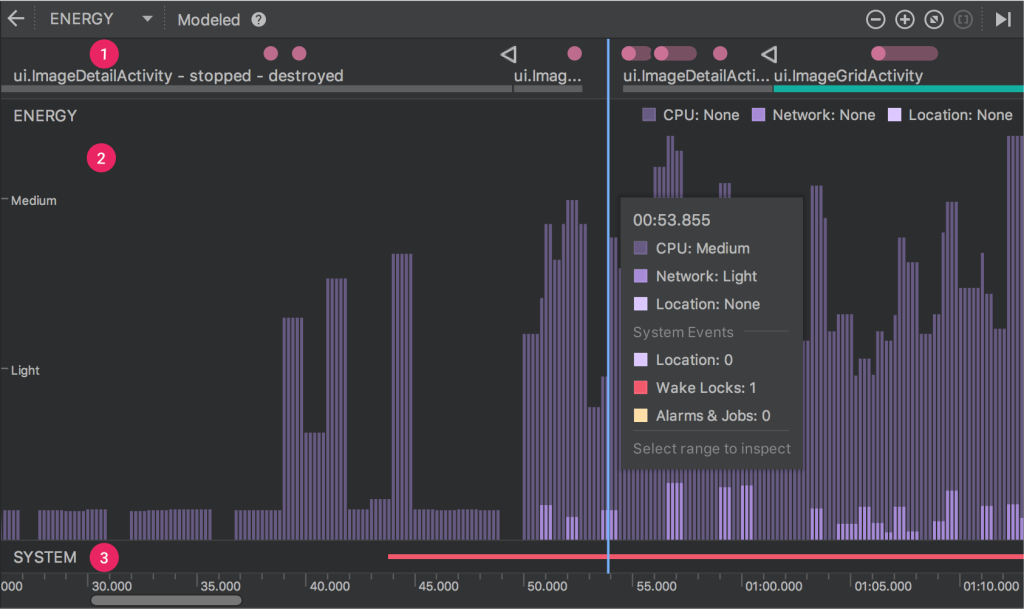Mastering Android Apps Power Consumption: Boost Performance With Efficient Solutions!
Android Apps Power Consumption
Introduction
Hello Readers,
1 Picture Gallery: Mastering Android Apps Power Consumption: Boost Performance With Efficient Solutions!
Welcome to this informative article on Android Apps Power Consumption. In today’s digital age, smartphones have become an integral part of our lives, and one crucial aspect that users often concern themselves with is the power consumption of their Android apps. With the plethora of apps available on the Google Play Store, it is essential to understand how these applications impact the battery life of our devices. In this article, we will explore the various factors that contribute to power consumption and provide insights into optimizing your app usage for a longer-lasting battery life.

Image Source: android.com
So, let’s delve into the world of Android apps power consumption and uncover the key aspects that you need to know!
What is Android Apps Power Consumption? 📱⚡
Android apps power consumption refers to the amount of battery energy utilized by applications installed on Android devices. Every app running on your device consumes a certain amount of power, depending on its functionality and usage patterns.
The power consumption of Android apps is influenced by several factors, including the app’s code efficiency, background processes, network usage, screen brightness, and many more. Understanding these factors can help you make informed decisions on managing your app usage and optimizing your device’s battery life.
Who is Affected by Android Apps Power Consumption? 🤔
Android apps power consumption affects every Android device user. Whether you are a casual smartphone user, a professional relying on various productivity apps, or a gaming enthusiast, the battery life of your device is a crucial aspect that impacts your overall experience.
Considering the diverse range of Android users worldwide, it becomes essential to address the power consumption concerns of different user segments and provide solutions for enhancing battery performance.
When Does Android Apps Power Consumption Become a Concern? ⌚
Android apps’ power consumption becomes a concern when users notice a significant drain in their device’s battery life. If you observe that your device’s battery percentage drops rapidly even with minimal app usage, it is an indication that certain apps are consuming excessive power.
Additionally, power consumption becomes a concern during extended usage periods, such as when traveling, attending meetings, or engaging in activities where recharging options are limited. It is crucial to manage app usage and optimize power consumption to ensure that your device lasts throughout the day.
Where Does Android Apps Power Consumption Occur? 📍
Android apps power consumption occurs primarily within the device itself. When you launch an app, it starts running processes that utilize battery energy. These processes include CPU usage, network communication, screen rendering, and other background activities.
It is important to note that while power consumption occurs within the device, certain apps may also rely on cloud services or external servers for certain functionalities. Network usage for data synchronization and updates can also contribute to power consumption.
Why is Android Apps Power Consumption Important to Manage? 🤷♂️
Managing Android apps power consumption is crucial for several reasons. Firstly, excessive power consumption can lead to a drained battery, which disrupts your device’s functionality and limits its usability.
Moreover, prolonged power consumption can reduce the overall battery lifespan, leading to the need for frequent battery replacements. This not only incurs additional costs but also has environmental implications due to the disposal of old batteries.
Efficiently managing power consumption allows you to optimize the battery life of your device, ensuring that you can use your favorite apps for longer durations without worrying about running out of power.
How to Optimize Android Apps Power Consumption? 📊⚙️
Optimizing Android apps power consumption involves adopting certain practices and making informed decisions regarding your app usage. Here are some tips to help you optimize power consumption:
Close Unused Apps: Close apps that are not in use to prevent them from running background processes that consume power.
Manage Background Sync: Limit the frequency of background sync for apps that constantly update data to reduce power consumption.
Adjust Screen Brightness: Lower your device’s screen brightness to conserve energy, especially in low-light environments.
Use Battery Optimization Settings: Android devices provide battery optimization settings that can help manage power consumption for individual apps.
Update Apps: Keep your apps updated to ensure you have the latest bug fixes and optimizations that can help reduce power consumption.
Advantages and Disadvantages of Android Apps Power Consumption 📱✅❌
Advantages
1. Extended Battery Life: By managing power consumption, you can enjoy longer battery life for your Android device.
2. Enhanced User Experience: Optimizing power consumption ensures smooth app usage without interruptions due to low battery levels.
3. Cost Savings: Efficient power management reduces the need for frequent battery replacements, saving you money in the long run.
Disadvantages
1. Limited Functionality: Restricting certain app functionalities to optimize power consumption may limit the overall user experience.
2. Background Sync Delays: Reducing background sync frequency can lead to delays in receiving real-time updates and notifications from apps.
3. Lower Screen Brightness: Lowering screen brightness to conserve energy may result in reduced visibility, especially in bright environments.
Frequently Asked Questions (FAQs) 🙋♀️🙋♂️
1. Can all Android apps be optimized for lower power consumption?
Yes, most Android apps can be optimized for lower power consumption. However, the extent of optimization may vary depending on individual app designs and functionalities.
2. Are there any specific Android apps notorious for high power consumption?
Some resource-intensive apps such as games, video streaming platforms, and navigation apps are known to consume higher levels of power compared to others. However, optimizations are continually being made to reduce their power requirements.
3. Do battery-saving apps actually help in reducing power consumption?
Battery-saving apps can help optimize power consumption by managing app usage, closing background processes, and adjusting device settings. However, it is essential to choose reputable battery-saving apps from trusted developers.
4. Does enabling battery optimization settings for all apps improve power consumption?
Enabling battery optimization settings for all apps may improve power consumption to some extent. However, it is advisable to review individual app settings and tailor battery optimization based on your usage patterns and priorities.
5. Can power banks and portable chargers be used as a solution to Android apps power consumption?
Power banks and portable chargers provide a temporary solution to low battery levels caused by high power consumption. While they can help extend your device’s usage, it is still essential to optimize power consumption for a long-term battery life.
Conclusion
In conclusion, managing Android apps power consumption is crucial for ensuring a longer-lasting battery life and an optimal user experience. By understanding the factors that contribute to power consumption and implementing optimization techniques, you can make the most of your Android apps without worrying about frequent recharging or battery drain.
Remember to close unused apps, manage background sync, adjust screen brightness, utilize battery optimization settings, and keep your apps updated to maximize power efficiency. By practicing these tips, you can enjoy extended battery life and seamless app usage on your Android device.
So, go ahead and optimize your Android apps power consumption today!
Final Remarks
Android apps power consumption is a critical aspect that influences the overall user experience of Android device users. By understanding the factors and implementing optimization strategies, you can ensure a longer-lasting battery life and enhanced usability of your favorite apps.
However, it is important to note that power consumption can vary depending on various factors such as device specifications, app design, and usage patterns. The information provided in this article serves as a general guide to help you optimize power consumption, but individual results may vary.
Always consider your specific device and app requirements when implementing power-saving techniques. If you have specific concerns or require assistance, consult your device manufacturer or seek professional advice for personalized solutions.
This post topic: Android Apps

![local_auth] Application crashes on Android](https://greenifyapk.info/wp-content/uploads/2023/09/local-auth-application-crashes-on-android-issue-5536-150x150.png)
